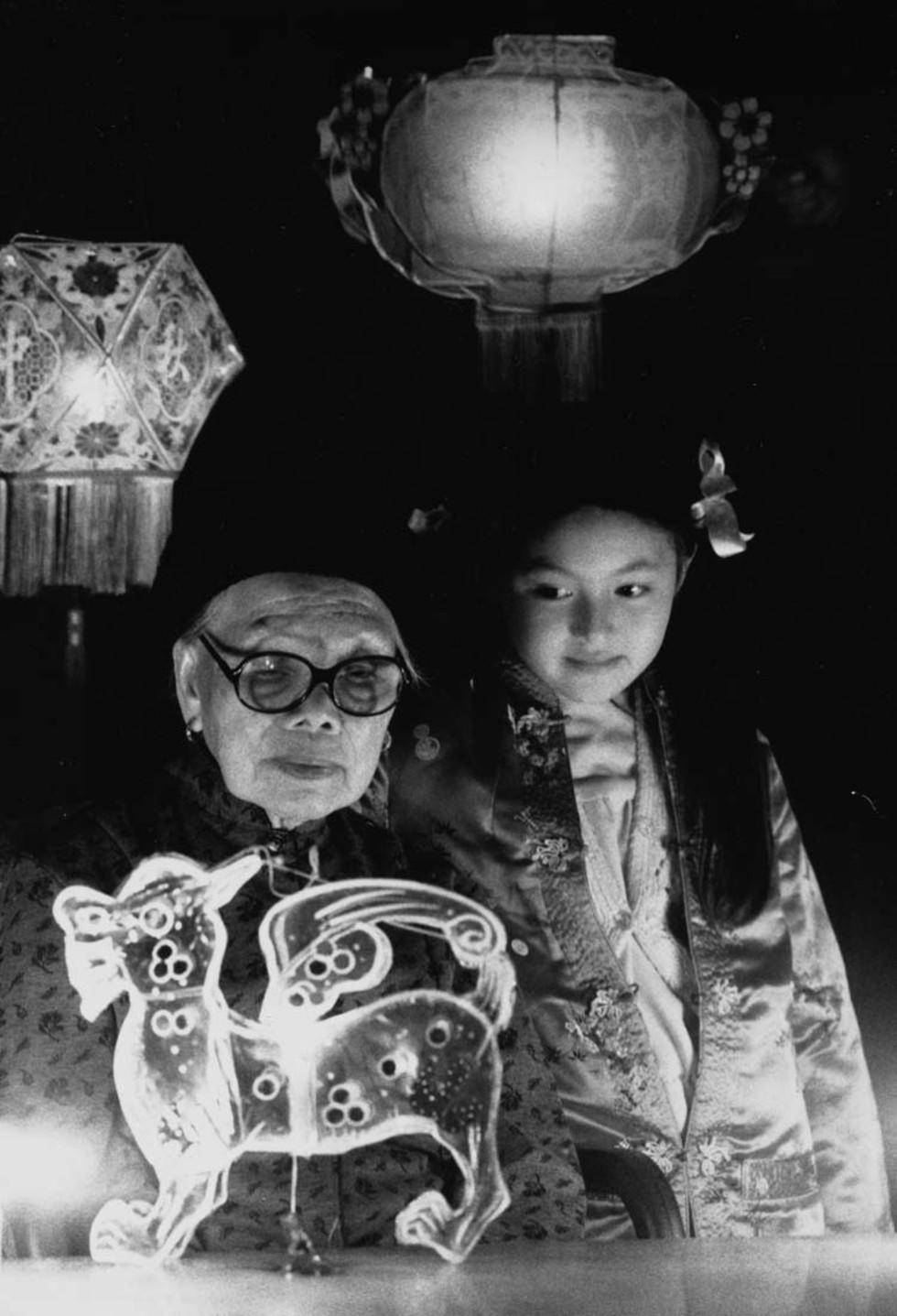


About this record
This black-and-white photograph of Madame Ho with her granddaughter was taken at an unknown location in Australia. Dressed in Chinese-style clothing, they are gazing at a lantern representing an animal. Two other lanterns of different shapes hang above them. The granddaughter is wearing a traditional embroidered jacket over Western-style clothes.
Educational value
- This posed photograph was taken in the late 1980s on behalf of the federal Department of Immigration as an example of Chinese people in Australia practising an aspect of their traditional culture. The positive image of a grandmother and granddaughter dressed in traditional clothes and making traditional lanterns may have been linked to the aim of the then recently created Office of Multicultural Affairs to assist in the development of a multicultural society.
- Lanterns of many shapes and sizes are integral to all aspects of Chinese culture. Lanterns are symbols of hope, rejuvenation and celebration and are used to communicate with gods, for ceremonies and as symbols. Often they are made with a bamboo or wire frame, covered with thin painted paper or cellophane. The Lantern Festival (also called Yuan Xiao) is a celebration of family reunion on the fifteenth day of the first month on the Chinese lunar calendar, marking the end of Chinese New Year celebrations.
- Several different types of Chinese lantern are seen in this image, with the grandmother and her grandchild focusing on a lantern that takes the form of an animal. The other lanterns are similar to the Beijing palace lantern style. These lanterns typically have colourful decorations and hanging golden tassels.
- Aspects of Chinese culture are widely observed and practised in Australia by descendants of Chinese immigrants. For example, organisers of the annual Bendigo Easter Festival in Victoria claim to have the largest Chinese dragon in the world. Chinese people have migrated to Australia from mainland China, Taiwan and other parts of south-east Asia, such as Malaysia, Vietnam and Hong Kong.
- Tens of thousands of Chinese people (mostly male) arrived in Australia during the Gold Rush in the 1850s and 1860s. The number dropped dramatically towards the end of the 19th century as anti-Chinese sentiment grew ahead of the adoption of the Immigration Restriction Act of 1901, which was designed to restrict immigration from China and other areas of Asia. Despite the White Australia policy, some pioneer Chinese families did remain throughout the 20th century. Migration of Chinese people to Australia has increased in recent decades.
Acknowledgments
Learning resource text © Education Services Australia Limited and the National Archives of Australia 2010.
Related themes
Need help with your research?
Learn how to interpret primary sources, use our collection and more.




